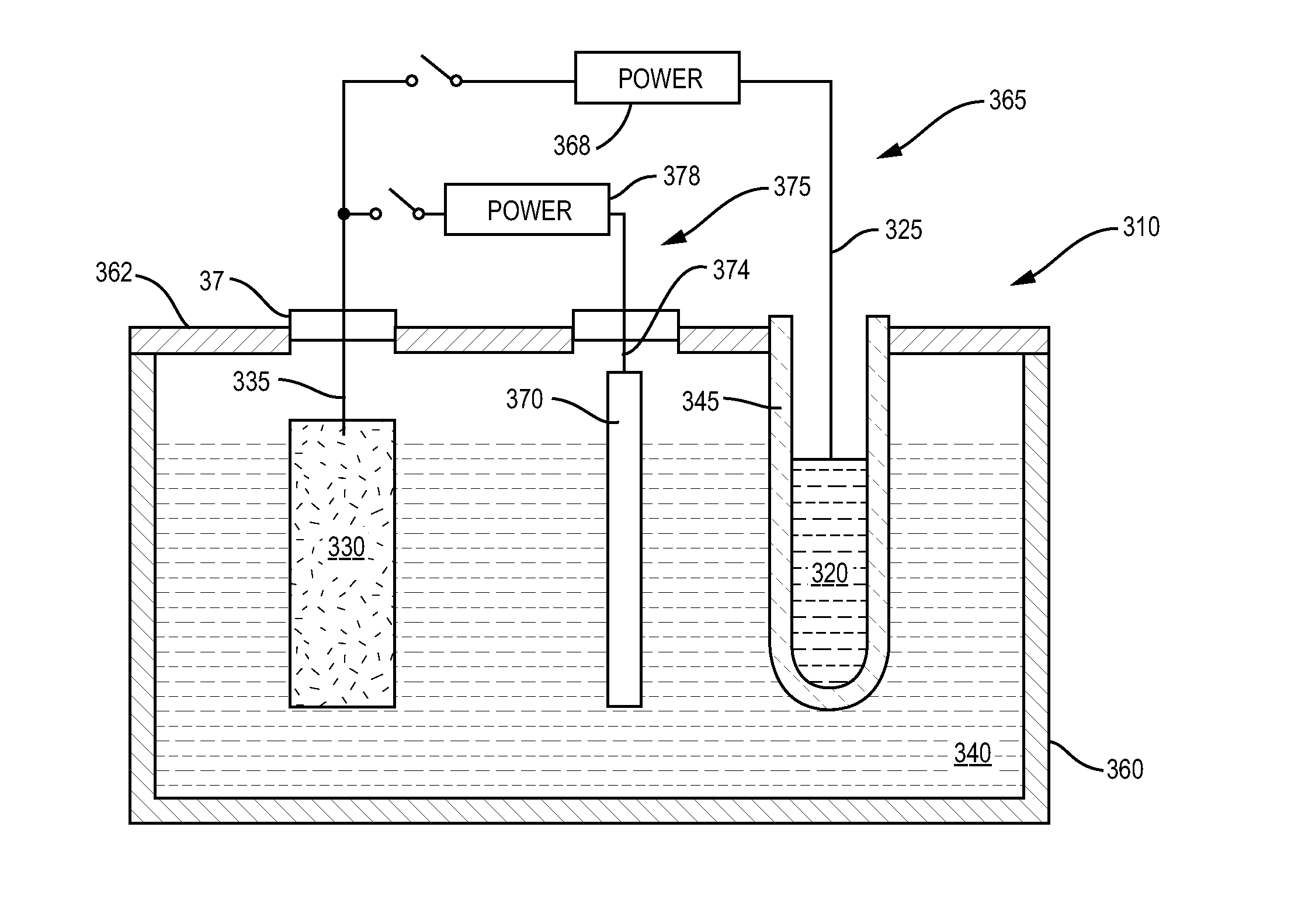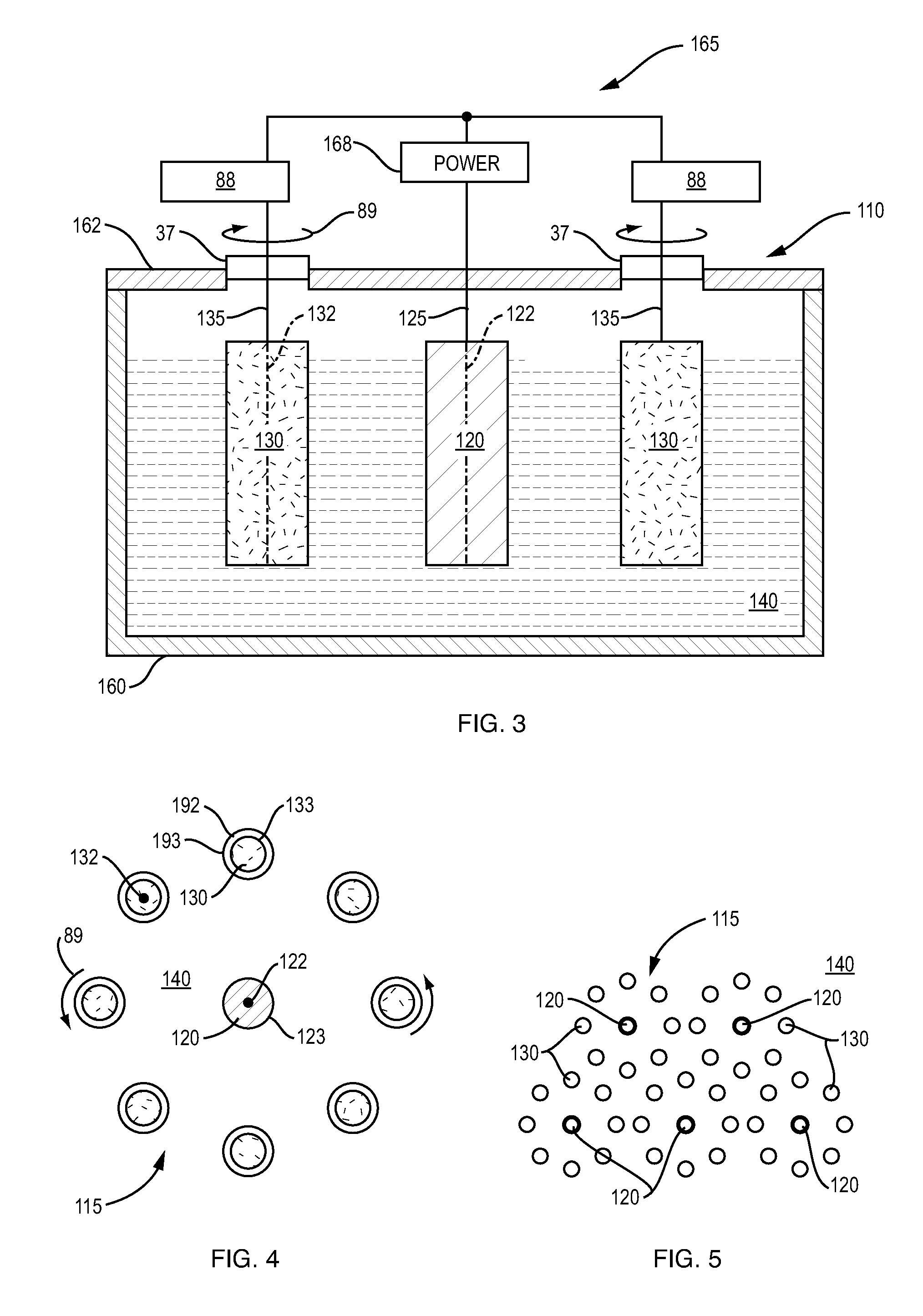Primary production of elements
a technology of element and production sequence, applied in the field of primary production of elements, can solve the problems of a purification sequence and a minimum of 99.9999% purity, and achieve the effect of improving the purity reducing the cost of the purification sequen
- Summary
- Abstract
- Description
- Claims
- Application Information
AI Technical Summary
Benefits of technology
Problems solved by technology
Method used
Image
Examples
Embodiment Construction
[0033]With reference to FIG. 1, in an illustrative embodiment, an electrowinning system 10, configured for direct production of a target element, silicon, from a feedstock compound, silicon dioxide, includes an anode 20, a cathode 30 and an intervening liquid electrolyte 40 in which the feedstock compound is dissolved. The anode 20 is separated from the electrolyte 40 by an ionically conductive membrane 45. The electrolyte 40 is contained by a vessel 60 covered by a lid 62. An exterior circuit 65 is configured to receive electrons from the anode 20 and to deliver electrons to the cathode 30 during operation of the system 10. The electrolyte 40 and the electrodes 20 and 30 may be is maintained at an operating temperature below the melting temperature of silicon (1414° C.), illustratively around 900° C. to 1300° C.
[0034]The exterior circuit 65 includes a power supply 68 which may be a DC voltage source operable to apply sufficient voltage across the anode 20 and the cathode 30 to caus...
PUM
| Property | Measurement | Unit |
|---|---|---|
| melting temperature | aaaaa | aaaaa |
| thick | aaaaa | aaaaa |
| diameter | aaaaa | aaaaa |
Abstract
Description
Claims
Application Information
 Login to View More
Login to View More - R&D
- Intellectual Property
- Life Sciences
- Materials
- Tech Scout
- Unparalleled Data Quality
- Higher Quality Content
- 60% Fewer Hallucinations
Browse by: Latest US Patents, China's latest patents, Technical Efficacy Thesaurus, Application Domain, Technology Topic, Popular Technical Reports.
© 2025 PatSnap. All rights reserved.Legal|Privacy policy|Modern Slavery Act Transparency Statement|Sitemap|About US| Contact US: help@patsnap.com



